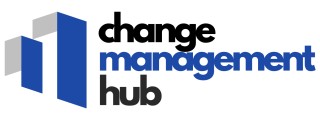
Understanding the Store Onboarding Process
An Overview of Retail Employee Onboarding
In the dynamic world of retail, the onboarding process serves as a critical touchpoint for new hires. It's the gateway through which employees familiarize themselves with the company's culture, values, and expectations, forming the foundation of their journey within the business. The process aims to efficiently integrate new retail employees into their roles, ensuring they are ready to deliver excellent customer service from day one.
Onboarding is more than just an introductory phase; it's an opportunity to set the tone for a long term relationship between the employee and the company. Many businesses deploy extensive onboarding programs or checklists to guide this process, aiming to create a seamless and engaging experience for the new team members.
The effectiveness of an onboarding experience can significantly impact a company's long-term success. An engaging and well-structured retail onboarding process ensures that hires feel valued, informed, and prepared to contribute to the team's success quickly. Moreover, when done right, onboarding can reduce turnover rates and enhance job satisfaction, benefiting both the company and its employees.
As retail businesses evolve, understanding the nuances of onboarding becomes imperative. Establishing effective onboarding practices helps in addressing inevitable challenges, fostering a productive and positive culture, and ultimately supporting the overall business goals. The process moves beyond mere procedural training, emphasizing the importance of feedback loops, meaningful interactions, and continued check-ins to support employees in their growth and integration into the team.
Key Challenges in Store Onboarding
Overcoming Onboarding Obstacles in Retail Settings
The store onboarding process is indispensable for seamlessly integrating new hires into the business framework, yet it comes with its own set of challenges. For retail employees, onboarding isn't just about familiarizing themselves with job responsibilities but also acclimatizing to the company culture and customer service ethos. One major challenge is the wide variation in employee experience levels. Many new employees enter the retail industry with limited prior exposure, necessitating comprehensive employee training programs. Moreover, the fast-paced nature of retail demands that employees quickly adapt to their roles, presenting yet another hurdle. The time constraints inherent in the retail sector further complicate the onboarding process. Retail businesses often need new hires to be job-ready almost immediately, causing the day-to-day training responsibilities of existing team members to increase. This can lead to a reliance on a robust onboarding checklist designed to maximize efficiency and ensure no crucial elements are missed. Additionally, misalignment between the expectations of the company and the new hires can lead to misunderstandings that affect the onboarding experience. Effective onboarding should prioritize clear communication to bridge any gaps in understanding. Understanding these key challenges is crucial for any onboarding program aiming to enhance long-term employee retention and overall team cohesion. Leveraging feedback mechanisms and regular check-ins with new employees can create a supportive environment where they feel valued and understood. The ability to transition smoothly into the retail team is further amplified by the role feedback plays in the onboarding process. Regular, constructive feedback ensures that new hires are on the right track and aligned with the company objectives. For further insights on enhancing onboarding experiences, explore this practical guide that discusses various strategies.Strategies for Effective Onboarding
Implementing Effective Strategies for Seamless Integration
Creating an impactful onboarding experience requires a targeted approach, designed to support new hires as they transition into their roles. A successful onboarding program not only helps retail employees adapt quickly but also fosters long-term engagement and job satisfaction.- Structured Training Programs: Training is an essential element of the onboarding process. Retail businesses should consider comprehensive employee training sessions that cover both job-specific skills and soft skills such as customer service. This ensures employees feel prepared to meet customer expectations from day one.
- Mentorship and Buddy Systems: Assigning mentors or buddies provides new team members with a reliable point of contact for questions and guidance during their transition. This one-on-one support can significantly enhance the onboarding experience, promoting a sense of belonging and alignment with the company culture.
- Utilizing Onboarding Checklists: Providing clear, detailed onboarding checklists can streamline the onboarding process. This step-by-step guide ensures that new hires understand their day-to-day responsibilities and can keep track of their progress as they ramp up within the company.
- Regular Check-Ins: Continual feedback and regular check-ins between new hires and their supervisors are vital. These conversations help address any concerns, provide clarity on job roles, and help in reinforcing positive behaviors — contributing to a positive and effective onboarding process.
- Aligning with Company Vision and Values: Introducing new hires to the company’s mission and values from the outset is crucial. This not only aids in understanding the overarching business objectives but also helps employees feel connected and motivated in contributing to collective goals.
Role of Communication in Onboarding
The Significance of Clear and Open Communication
Effective communication is the backbone of any successful onboarding program in the retail sector. It not only bridges the gap between a new hire and existing team members but also fosters a culture of transparency and support within the company. This is crucial for ensuring that the onboarding process is seamless and comprehensive, allowing new employees to quickly adapt to their roles and the company culture.
In retail onboarding, communication begins even before the new employee’s first day. By clearly outlining the company's expectations and providing detailed information on the onboarding checklist, new hires can acclimate to their new roles more smoothly. This pre-boarding process helps set the stage for a supportive onboarding experience, reducing first-day jitters and enabling hires to feel welcomed and prepared from the start.
To further enhance the onboarding experience, companies should prioritize regular check-ins with new retail employees. These sessions provide valuable opportunities for hires to express their experiences, ask questions, and receive feedback. Check-ins can be instrumental in identifying potential gaps in the onboarding process, and they promote a sense of belonging and engagement among employees.
Moreover, the role of managers and team leaders in providing consistent and constructive employee training cannot be overstated. Their ability to communicate effectively with new employees directly impacts how new hires perceive the company and their willingness to integrate into their roles. Regular interactions with team members also help build a collaborative environment that is essential for retail employee success.
Overall, open lines of communication are critical to nurturing an effective onboarding program, leading to long-term employee retention and improved customer service within stores. By prioritizing communication, companies can ensure that new team members are well-equipped to contribute positively to the business and enhance the experience for customers.













